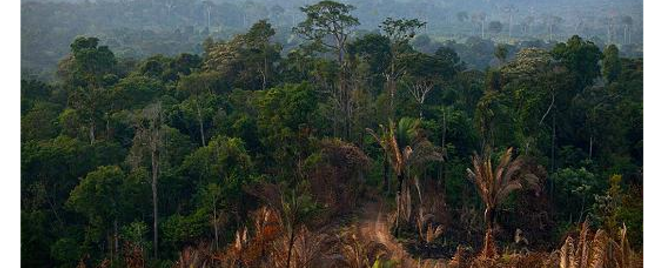THE AMAZON IS AT EXTREME RISK OF WILDFIRES.
Broad patches of the Amazon rainforest basin are at extremely high risk for wildfires this year, according to a new report from NASA and the University of California, Irvine.
Initial conditions going into the area's dry season so far suggest this could be the toughest year for wildfires since 2002, according to a fire forecast released last week. This is worse than exceptionally dry years in 2005, 2007 and 2010, according to Yang Chen, a project scientist at the University of California, Irvine, who worked on the research.
Among the areas most at risk are deforested areas, including farms and human settlements.
The southern Amazon region has suffered an unusually large deficit of rainfall over the last three years, worsened by a strong El Nino from 2015 to 2016.
Chen added that these are only the initial conditions going into the season, and that there may be other factors that mitigate, or heighten, the risk.
The Amazon basin is home to the world's largest tropical rainforest, and is considered one of the most biodiverse regions on Earth. Portions of the rainforest had been steadily cleared for logging, farming and mining operations for decades, before governments in some countries — notably Brazil, began taking steps to slow the rate of deforestation.

The image above shows the precipitation deficits across South America for each year: 2005, 2007, 2010, and 2016. The deepest red areas are those with the deepest deficits in rainfall.
This region spans Brazil, Peru and Bolivia. Risk is highest at the outermost layers of rainforest, areas that have been cleared for cropland or development, and the savannah-like areas called the cerrado. Areas with human activity are particularly prone, since humans are often the sources of fires.
"This is an extreme event, in terms of the stress the trees are under in the Amazon Basin," said Jim Randerson, a professor of Earth systems science at the University of California, Irvine. Randerson was one of the scientists who worked on the forecast.
Randerson told CNBC that the trees emit stored moisture during the dry season, in a kind of "positive feedback cycle" that helps sustain them in drier periods, and maintains enough moisture to keep fires from spreading.
"So this stress will kill trees directly," he said, "and it contributes to an overall higher wildfire risk."
Vegetation is thick enough in the deepest interiors of the canopied rainforest that fires will likely be unable to burn.
The areas at the edges of the forest, where tree cover is thinner, and the areas that have been deforested by loggers or farmers, do not have this same protection.
"One of the things that are hopeful is that Brazil has had great success in reducing its deforestation rate in the last decade so maybe that will have an effect on the actual number of wildfires," Randerson said. "It may be that while the climate conditions are there, the human conditions aren't."

Dado Galdieri | Bloomberg | Getty Images
Trees stand in the rain forest in the southern part of the Amazonian state of Para, near Belo Monte, Brazil.
Follow us on Twitter - @akatechsolution / @smartdevicess
Leave a Comment
Let Millions of People know about your Product(s) / Service(s)
Target a Specific Audience on different News Categories
Our Partners
"Making the simple complicated is commonplace; making the complicated simple, awesomely simple, that's creativity"
- Charles Mingus

















































.png)


















